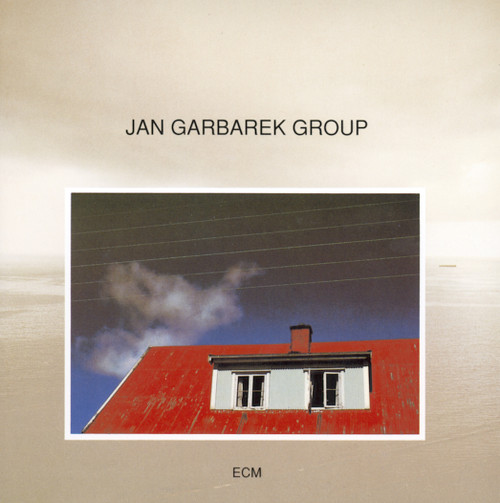Having come to know Keith Jarrett primarily through his astounding improvisatory skills and classical interpretations, this recording marks my first time encountering him as composer proper. On the one hand, I feel as if setting Jarrett down on paper somehow limits his potential (note, for instance, his understandably longtime reluctance to publish a score version of the lauded Köln concert). On the other, Jan Garbarek is given such free reign of the icy territory into which he is deployed on this recording that he is able to channel Jarrett’s essence to its fullest. It’s difficult to imagine Jarrett’s music being any other way.
Any work for soloist and orchestra may be likened to a conversation in which the former introduces topics for the latter to work through “verbally.” At some point this dialectical relationship begins to take on a life of its own in the recording process. Yet in listening to Jarrett’s compositions one gets not conversation but conversion, a real-time transfiguration through which music implodes rather than expands. Garbarek doesn’t engage with the orchestra so much as traverse it, lifting and dropping his weighted feet across its rosin-dusted expanse. If there is dialogue to be found here, it’s entirely internal.
“Numinor” eases its way into the listener’s field of vision, across which Garbarek uses mournful reedwork to draw a series of jagged constellations. The orchestra sometimes bleeds, as if it were a cloth sheared by the edge of these gritty ruminations. Garbarek shouts with his instrument, treating it more as an extension of his voice by which the placement of his fingers articulates syllables in lieu of notes. Although we might not recognize the language, something intelligible comes through. In spite of some inspired solo passages, the music remains decidedly horizontal: every step forward is countered by one step sideways. There is, however, an incredibly moving scene in the final passage of “Windsong” where the saxophone blends into its surroundings, sharing an intimate moment of continuity made all the sweeter for its unexpected cessation. The title track, which closes the disc, is playful and romantic, slaloming its way through triadic signposts. The mood is contradictory, Garbarek engaged in two entirely different dialogues in a semblance of one.
Overall, I find Luminessence to be a challenging listen. Not because the music is particularly modernist, but because Jarrett makes so visible the often hidden dynamics of authorship we come to take for granted. As one who is continually enlarging the notion of musicality in everything he touches, Jarrett provides us here with an unabashed document of the compositional process. It is the audible equivalent of looking at the master’s sketchbook. I also find this album to be quite dark in spite of its glowing title, like a hidden shadow beneath the unturned page. It is an album that erases as many words as it inscribes, a memoir of images rather than prose. All of this makes for an effective, if threadbare, project. There are very few motives to speak of, which is liberating, as one is never subjected to the often-dominant reprise, nor to the subservience of secondary themes. Notes are sustained in ways they couldn’t have been sustained before, ending as abruptly as they began. This process is illustrative of the title’s clever play on words, a symbiosis of color and opaque desire.
Tracklist:
1 Numinor 13:54
2 Windsong 6:34
3 Luminessence 15:16
Composed By – Keith Jarrett
Conductor – Mladen Gutesha
Strings – Südfunk Symphony Orchestra Stuttgart
Tenor Saxophone, Soprano Saxophone – Jan Garbarek







